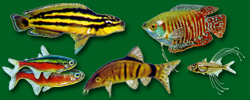- О проекте
- Фотогалерея
- Аквариумные беспозвоночные
- Аквариумные растения
- Аквариумные рыбы
- Альбомы посетителей сайта
- Рептилии и амфибии
- Выставки, встречи, конкурсы
- Магазины, разводни, домашние хозяйства
- Клуб аквариумистов "Хемихромис", г. Петрозаводск
- хозяйство Владимира Челнокова
- Аквариумы Кузьмичева Кирилла
- Дискусоразводня “С.К.А.Т.” С.И.Горюшкина
- Зоомагазин «Бетховен» г.Армавир
- аквариум Лики Аверкиевой
- аквариум Юли из Жаворонок
- аквариум Яны И.
- дома у Михаила Волкова
- зоомагазин Зеленая игуана
- карантинная база Андрея Чурилова
- коллекция Евгения Цигельницкого
- коллекция Константина Шидловского
- разводня Александра Березина
- разводня Владимира Сторожева
- рыборазводня АкваЭкзотика из Лыткарино
- хозяйство Алексея Бринева
- Разные комбинации ламп Hagen
- Сингапурский каталог растений
- надо разбирать
- Библиотека
- Форум
- Правила сайта
- Поиск
Cycling your tank
Статья про разные методы «запуска» аквариума. На английском языке.
| These are the author's cycling-test tanks after the nitrogen cycle was well the way to being established in each. |
| Cycling your tank |
| Text and photos by David Lass |
Whenever you start a new tank, it is very important that you properly "cycle" it. This has nothing to do with riding it around on a two-wheeled vehicle, but rather refers to getting the nitrogen cycle up and running in the tank. The nitrogen cycle is at the heart of making every aquarium work. There are three steps to the nitrogen cycle — and this is about as technical as you need to get with a fish tank:
| 1 | One group of bacteria breaks down ammonia (which is deadly to fish) into nitrite. Ammonia comes from fish wastes, decaying plants, etc. |
| 2 | Nitrite is only a little less deadly than ammonia — perhaps it is worse, in that nitrite tends to build up to toxic levels and stay there. A second group of bacteria break down the nitrite into nitrate, which is much less toxic than either ammonia or nitrite. |
| 3 | Nitrate can be removed from an aquarium by having a lot of fast-growing live plants and by doing frequent, regular water changes. |
The nitrogen cycle is dependent upon these bacteria and the fact that there is enough food in terms of ammonia (and nitrite) to break down all of the wastes into nitrate. The test that this article is about involves different ways of establishing the nitrogen cycle in newly set-up tanks.
The Test
For the purposes of this article I wanted to test the three primary ways that hobbyists can establish the nitrogen cycle in a new fish tank:
| 1 | The nitrogen cycle can be established by using some water from an established tank and a filter that has been running for a few months in a tank with fish. |
| 2 | Fish can be slowly added as the nitrogen cycle is established. Because this involves subjecting fish to a certain amount of stress from ammonia and nitrite, many hobbyists prefer the third method. |
| 3 | "Fishless" cycling involves establishing the nitrogen cycle by adding ammonia sans fish. |
I took three identical 20-gallon high tanks and set them up as follows:
Tank #1 was filled halfway with water from a healthy established tank and half with new water. I treated the tank with water conditioner, and I put a filter on the new tank that had been in a tank with lots of fish and was well "seeded" with good bacteria. I then put eight medium-sized fantail goldfish into this tank.
Tank #2 was filled with all new water and again conditioned. I put two gold fans into this tank.
Tank #3 was filled with all new conditioned water. Into this tank I added ammonia — plain-old straight ammonia, with nothing else added to it in the way of scents or coloration.
The test would be to see whether tank #1 remained free of ammonia and nitrite, as well as how well tanks #2 and #3 established the nitrogen cycle. Eight medium goldfish (with bodies 2 inches long) were used as the fish load for each tank to try and push the nitrogen cycle to the maximum. This would probably be too many fish for a 20-gallon high tank, but I was monitoring the tanks regularly, doing water changes as needed and making sure the fish were not overly stressed.
Interpreting Test Numbers
Doing this test was very interesting. I have never done "fishless" cycling of a tank, since I always have plenty of old filters from other tanks, gravel and plants that I use to seed any new tanks; in fact, I learned about this technique on , where I am a moderator. From the many posts (see sidebar) by various hobbyists who clearly knew what they were doing about fish, I was interested in trying it out.
My conclusion is that fishless cycling of a tank works very well, and it certainly poses no risk to any live fish. I think that the best way to cycle a tank is what I did with tank #1, but this only works if you can take a fully active sponge filter from a known tank and put it into the new tank, with a mixture of aged and new water.
The fish in tank #1 basically did not see much ammonia or nitrite, and the nitrate was taken care of by water changes. In tank #2, where I cycled it the "standard" way by adding a few fish at a time and letting the nitrogen cycle get established naturally over time, the fish saw some ammonia, nitrite and nitrate, but not enough to do them any real damage.
I'm not quite sure why the nitrate got so high in tank #2 in the early days of establishing the cycle, but I presume it was something screwy with the testing apparatus. Tank #3, where I did the fishless cycling, worked very well. The nitrite and nitrate levels never got all that high, but the bacteria became established and the tank was cycled in about six weeks. When I added the full complement of fish to tank #3 all went well; five days after being added, the fish were fine with 0 ammonia and 0 nitrite and manageable nitrate levels.
My Conclusion
Based on this test that I did down in my own fish room, I am now a believer in "fishless" cycling of a tank, although if it is done correctly, the "standard" way of adding a few fish at a time also works. With the fishless cycling method, it is best to add all of the fish that you want to have in the tank at one time, when the tank is completely cycled. If you don't do this, you will have "mini-cycles" each time you add more fish. On the other hand, during cycling with fish, it is very easy to add too many fish at once, blow the ammonia through the roof and have very stressed, if not dead, fish.
Please patronize your local fish stores — and keep up with those water changes.
| What the Kids are Saying |
The topic of getting the nitrogen cycle going in a tank has been an actively discussed topic on the forums of , and in connection with this article I asked folks to tell me their experiences with cycling fish tanks. I encourage to you see all of the postings on the topic of cycling a new tank on , by visiting .
Excerpts from some of the posting on include the following:
Well, I for one have never cycled without fish. I have two tanks, both cycled with fish, and still have the same fish I started out with. My goldfish tank is three years old and my tetras and catfish are 1 1/2 years old.
Adding fish after a tank has cycled is fine, as once the bacteria are established, their colonies double very quickly, so the fish added later are not under nearly as much stress as they would have been had they been used to cycle the tank.
One major issue I've seen with fishless cycling is that people get the idea that because they cycled without fish that they won't have any issues once the fish are introduced to the tank. Major misconception. Any time you introduce fish to a tank, be it cycled with or without fish, you have to keep an eye on the parameters because they will inevitably change.
There will not always be fish deaths when cycling with fish, but there is always stress. It's unavoidable because a certain amount of ammonia and nitrite have to be left in the water for it to cycle, and even that small amount can (and often does) take its toll.
I do a bit of both. I also "silent cycle" with plants. I usually let my new tank cycle for a day or so without any plants or fish, then I add the plants. I then let it cycle like that for two weeks. Afterward, I add a few fish and let it cycle some more for a week. This method has worked well for me. In total it cycles for about a month. (NOTE: I'm not sure this person has really gotten the nitrogen cycle going in the tank — they may just have "conditioned" a tank and not really cycled it.)
The only non-fishless cycling methods I know of that avoid stressing the fish are silent cycling with live plants, or adding enough bacteria (on filter media, gravel or in a commercial bacteria starter) to fully handle the bioload. Traditional cycling with fish (trying to grow the bacteria from scratch) should be avoided IMO because of the stress.
You don't have to add all the fish at once at the end; it's just a helpful option available with fishless cycling. If you don't add all the fish, you'll just be doing the initial cycle fishlessly and then having mini-cycles as fish are added, so it becomes kind of a hybrid fish/fishless cycle. It's fine to do it that way.
Fishless Cycling
From the tests I did in my own fish room, I now am convinced that fishless cycling is just as good as, and perhaps better than, the "standard" way of cycling a tank by gradually adding fish. It definitely works, and it obviously does not subject any fish to any stress whatsoever. The only drawback I find to fishless cycling is that it works best if you add all of the fish you want to have in the tank at once, which I think is unrealistic. I did an informal survey at one local fish store where I was delivering fish, and the four people who bought fish during the time I was in the store were all adding new fish to an existing tank. We had a lively discussion about cycling fish on , and for an excellent set of directions for fishless cycling I would suggest you go to: . From there you can take a look at the whole discussion we had on the topic. The better hobbyists understand the nitrogen cycle — however they choose to establish it in their own aquariums — the better their experience with fish-keeping will be.
»
- 6705 просмотров

